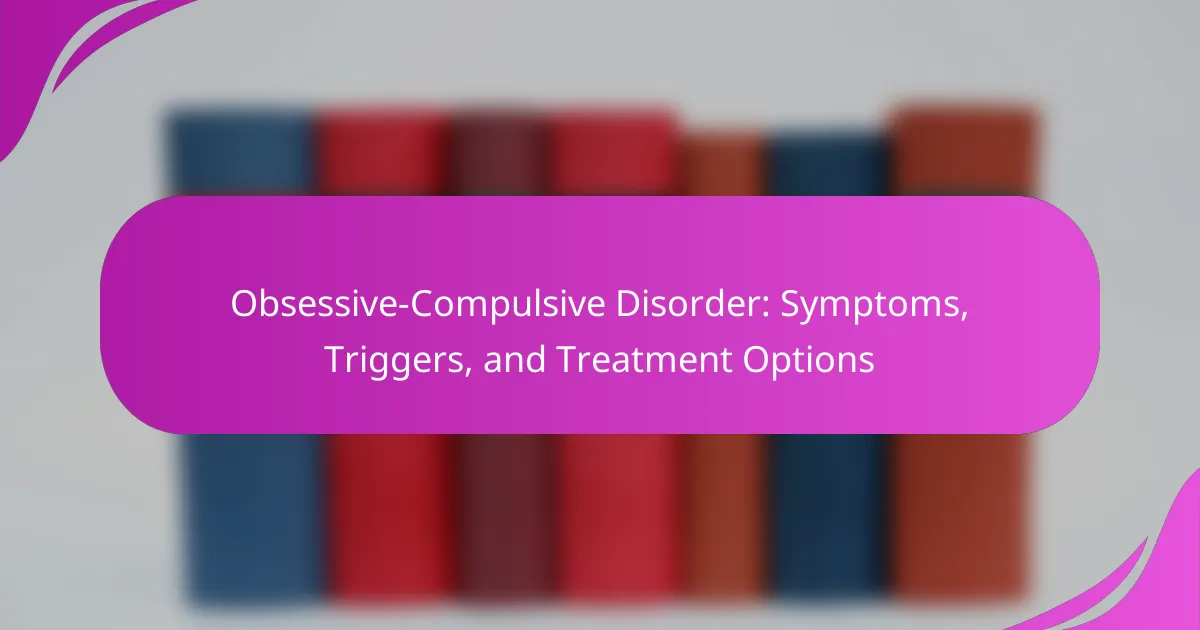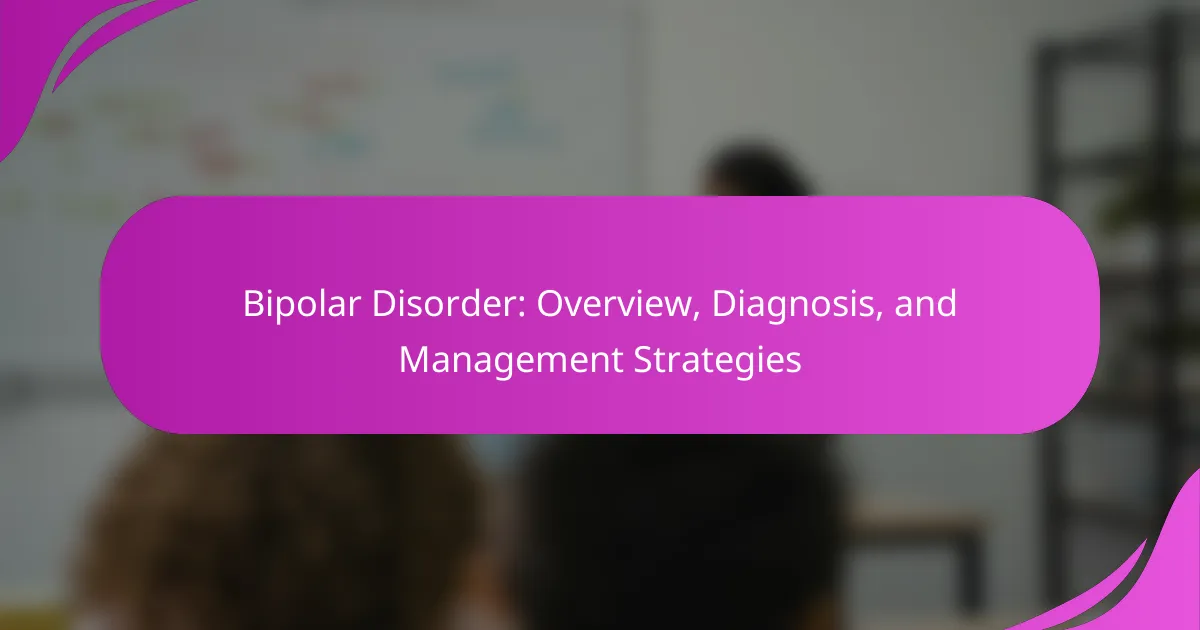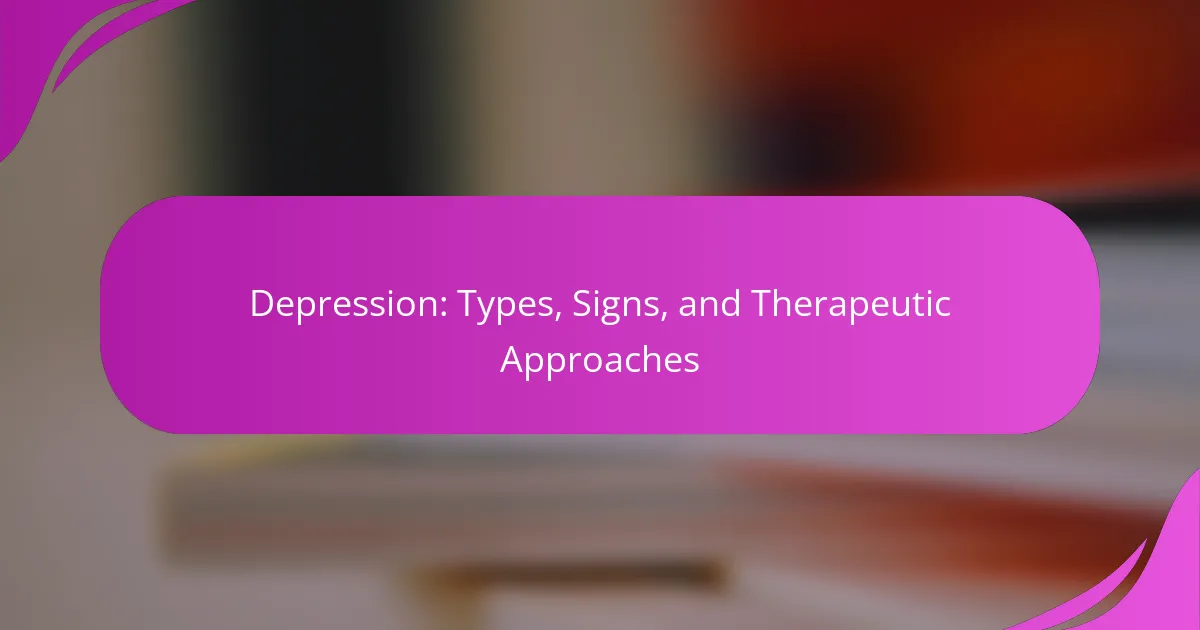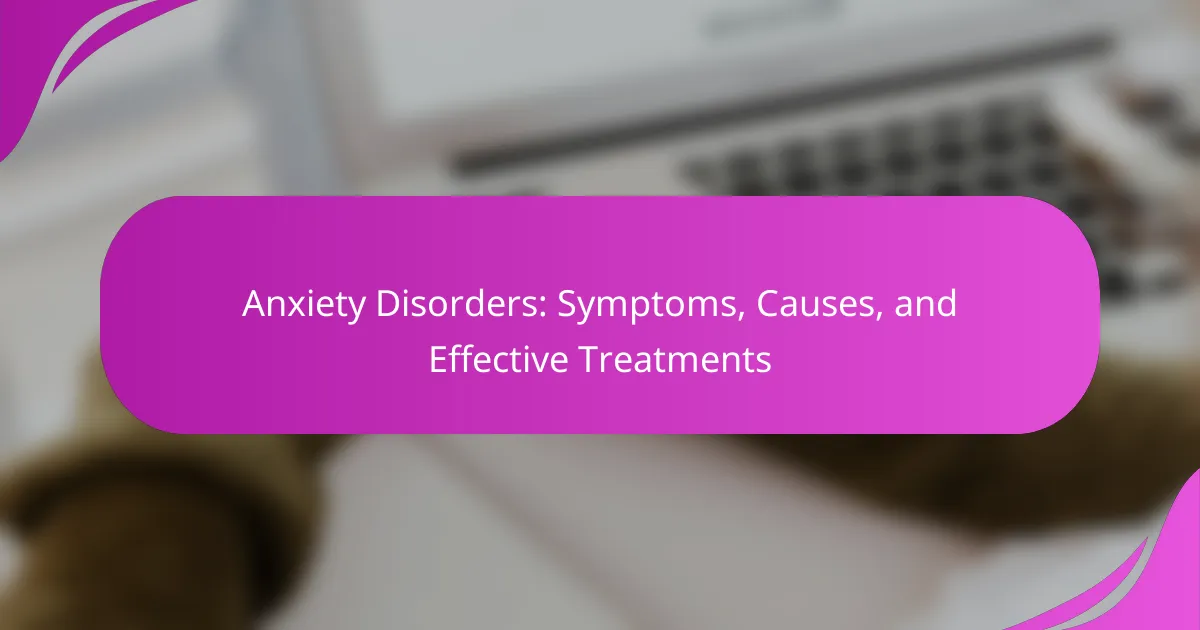PTSD can severely impact emotional well-being and daily functioning. This article explores the causes and symptoms of PTSD, along with effective coping mechanisms. Key strategies include mindfulness practices, cognitive-behavioral techniques, and social support engagement. Understanding unique and rare attributes of PTSD can enhance recovery outcomes.

What is PTSD and how does it manifest?
PTSD, or Post-Traumatic Stress Disorder, arises after experiencing or witnessing traumatic events. It manifests through symptoms such as flashbacks, nightmares, severe anxiety, and uncontrollable thoughts about the event. Root attributes include emotional distress and avoidance behaviors. Unique attributes can involve hyperarousal, which leads to heightened reactions. Coping mechanisms often include therapy, medication, and support groups, helping individuals manage symptoms effectively.
What are the common causes of PTSD?
Common causes of PTSD include exposure to traumatic events, such as combat, sexual assault, natural disasters, or severe accidents. Individuals may develop PTSD after experiencing or witnessing events that induce extreme fear or helplessness. The intensity and duration of the trauma significantly influence the likelihood of developing symptoms. Additionally, factors like genetic predisposition, previous mental health issues, and lack of social support can increase vulnerability. Understanding these causes aids in identifying at-risk individuals and developing effective coping mechanisms.
How do traumatic events contribute to PTSD?
Traumatic events significantly increase the risk of developing PTSD by overwhelming an individual’s ability to cope. Exposure to life-threatening situations, severe injury, or sexual violence can trigger intense fear and helplessness, leading to symptoms such as flashbacks and anxiety. The severity and duration of the trauma, as well as personal resilience factors, influence the likelihood of PTSD. Studies indicate that around 20% of individuals exposed to trauma develop PTSD, highlighting the complex interplay between trauma and mental health.
What role does genetics play in PTSD?
Genetics significantly influences the risk of developing PTSD. Studies indicate that genetic predisposition can affect brain chemistry and stress response, impacting how individuals process traumatic experiences. Research suggests that certain genes related to serotonin regulation may contribute to vulnerability. Environmental factors also interact with genetic traits, shaping the overall risk for PTSD.
What are the primary symptoms of PTSD?
The primary symptoms of PTSD include intrusive memories, avoidance of reminders, negative changes in mood, and heightened arousal. Intrusive memories often manifest as flashbacks or distressing thoughts. Avoidance behaviors may involve steering clear of places or people that trigger memories. Negative mood changes can lead to feelings of hopelessness or emotional numbness. Heightened arousal includes symptoms such as irritability, difficulty sleeping, and being easily startled. These symptoms can significantly impact daily life and relationships.
How does PTSD affect emotional well-being?
PTSD significantly impacts emotional well-being, leading to symptoms like anxiety, depression, and emotional numbness. Individuals may struggle with relationships, experience mood swings, and feel detached from reality. The unique attribute of PTSD is its ability to trigger intense emotional responses, affecting daily functioning. Coping mechanisms such as therapy and support groups can help mitigate these effects and promote healing.
What physical symptoms are associated with PTSD?
PTSD can lead to various physical symptoms including headaches, fatigue, and gastrointestinal issues. These symptoms often stem from the body’s stress response, which can manifest in multiple ways. Individuals may experience muscle tension, rapid heartbeat, and sleep disturbances, further impacting their overall health. Research indicates that chronic stress can exacerbate these physical symptoms, making effective coping mechanisms essential for management.
How does PTSD differ among individuals?
PTSD manifests differently in individuals due to unique personal experiences and coping mechanisms. Factors such as genetics, prior trauma, and support systems influence symptoms and severity. For example, some may experience hyperarousal while others might have emotional numbness. Understanding these variations is crucial for effective treatment approaches.
What unique experiences shape PTSD symptoms?
Unique experiences such as trauma severity, duration, and personal resilience significantly shape PTSD symptoms. Factors like combat exposure, childhood abuse, and natural disasters lead to varied symptom expressions. Individuals may experience flashbacks, avoidance behaviors, or heightened anxiety based on these unique contexts. Understanding these influences aids in developing targeted coping mechanisms.
How do cultural factors influence PTSD perceptions?
Cultural factors significantly shape perceptions of PTSD. They influence how symptoms are recognized, understood, and addressed within different communities. For instance, some cultures may emphasize collective healing practices, while others focus on individual therapy. Stigma surrounding mental health can vary, affecting help-seeking behaviors. Additionally, cultural beliefs about trauma can impact the interpretation of experiences, leading to diverse coping mechanisms. Understanding these cultural nuances is essential for effective treatment and support.

What are the universal coping mechanisms for PTSD?
Universal coping mechanisms for PTSD include mindfulness practices, cognitive-behavioral techniques, social support engagement, and physical activity. These strategies help individuals manage symptoms and improve emotional well-being.
Mindfulness practices, such as meditation and deep breathing, promote relaxation and present-moment awareness. Cognitive-behavioral techniques focus on reframing negative thoughts and behaviors associated with trauma. Engaging with social support networks provides emotional validation and connection, which can be crucial for recovery. Physical activity, including exercise, enhances mood and reduces stress through the release of endorphins.
Incorporating these coping mechanisms can significantly aid in managing PTSD symptoms over time.
What therapeutic approaches are commonly used?
Common therapeutic approaches for PTSD include cognitive behavioral therapy, exposure therapy, and eye movement desensitization and reprocessing. These methods help individuals process trauma, reduce symptoms, and develop coping strategies. Cognitive behavioral therapy focuses on changing negative thought patterns, while exposure therapy gradually exposes patients to trauma-related memories. Eye movement desensitization and reprocessing uses guided eye movements to alleviate distress associated with traumatic memories. Each approach has unique attributes that cater to different aspects of PTSD recovery.
How effective are cognitive-behavioral therapies?
Cognitive-behavioral therapies (CBT) are highly effective for treating PTSD. Studies show that CBT reduces symptoms in approximately 60-80% of patients, helping them process trauma and develop coping strategies. This approach targets root cognitive patterns, fostering resilience and recovery.
What role do support groups play in recovery?
Support groups play a crucial role in recovery from PTSD by providing emotional support, shared experiences, and coping strategies. They foster a sense of community, reducing feelings of isolation. Members can discuss their challenges and successes, which helps validate their experiences. Research shows participation in support groups can lead to improved mental health outcomes, enhancing resilience and promoting healing. These groups often include unique attributes like peer-led discussions, offering insights that professional therapy may not provide.
What lifestyle changes can aid in coping?
Lifestyle changes can significantly aid in coping with PTSD. Practicing mindfulness and meditation can help reduce anxiety and improve emotional regulation. Regular physical activity, such as walking or yoga, promotes overall well-being and reduces symptoms. Establishing a consistent sleep routine enhances rest and recovery. Engaging in social support networks fosters connection and reduces feelings of isolation. Lastly, maintaining a balanced diet rich in nutrients can support mental health.
How does exercise impact PTSD symptoms?
Exercise significantly reduces PTSD symptoms by promoting physical health and emotional well-being. Regular physical activity enhances mood, reduces anxiety, and improves sleep quality, which are crucial for managing PTSD. Studies indicate that aerobic exercises, such as running or swimming, can lead to a notable decrease in PTSD symptoms due to the release of endorphins and other neurochemicals. Engaging in group exercises also fosters social connections, providing additional support. Overall, incorporating exercise into a coping strategy can empower individuals to navigate their PTSD more effectively.
What dietary adjustments can support recovery?
Dietary adjustments can significantly support recovery from PTSD. A balanced diet rich in nutrients can enhance brain function and emotional well-being.
Incorporate omega-3 fatty acids, found in fish and flaxseeds, to reduce inflammation and improve mood. Antioxidant-rich foods, such as berries and leafy greens, can combat oxidative stress. Whole grains and lean proteins provide sustained energy and support neurotransmitter function.
Hydration is essential; aim for adequate water intake to maintain cognitive function. Avoiding processed foods and excessive sugar can stabilize mood swings.
Consider consulting a nutritionist for personalized dietary plans that address unique needs during recovery.
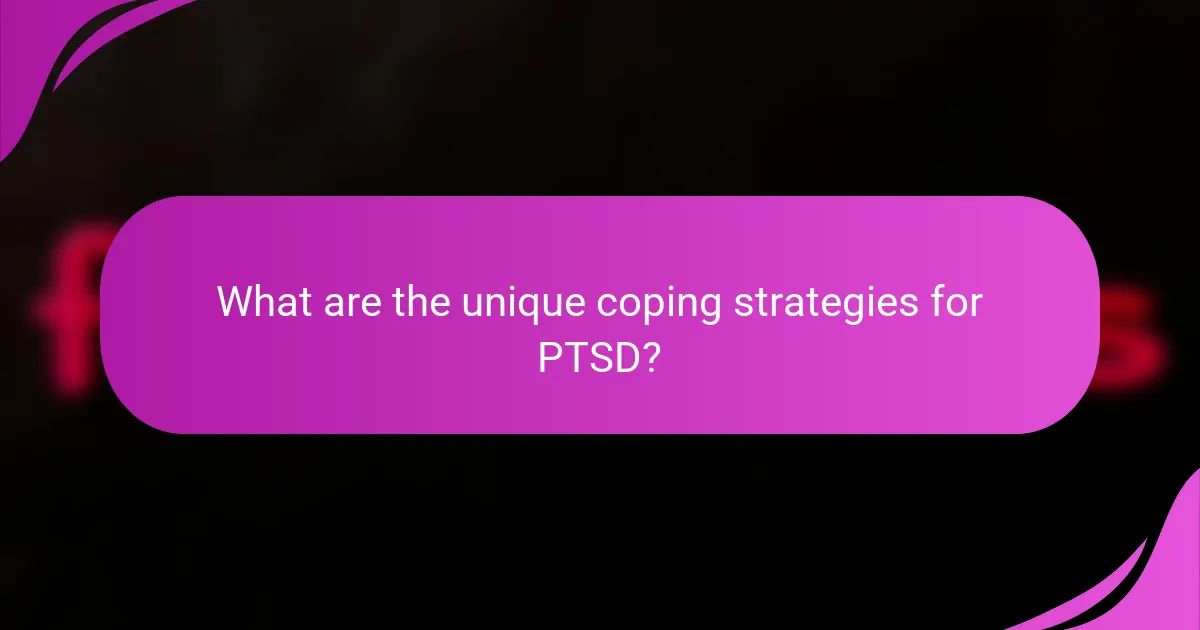
What are the unique coping strategies for PTSD?
Unique coping strategies for PTSD include mindfulness techniques, art therapy, and peer support groups. These methods foster emotional expression and connection, enhancing resilience. Mindfulness helps individuals focus on the present, reducing anxiety. Art therapy provides a creative outlet for processing trauma. Peer support groups create a safe space for sharing experiences and gaining insights from others. Each strategy offers distinct benefits, promoting healing and coping.
How do personal narratives influence coping?
Personal narratives significantly enhance coping mechanisms for individuals with PTSD. They provide a framework for understanding experiences, enabling emotional processing and integration. Sharing stories fosters connection, reduces isolation, and can promote healing. Research indicates that narrative therapy helps individuals reframe traumatic events, leading to improved mental health outcomes.
What is the importance of storytelling in recovery?
Storytelling is crucial in recovery from PTSD as it fosters connection and understanding. Sharing personal narratives can validate experiences, reduce isolation, and promote healing. It allows individuals to process trauma, reframe their experiences, and build resilience. Engaging in storytelling can enhance coping mechanisms, facilitating emotional expression and community support.
What innovative therapies are emerging for PTSD?
Innovative therapies for PTSD include virtual reality exposure therapy, eye movement desensitization and reprocessing (EMDR), and psychedelic-assisted therapy. These approaches target symptoms by facilitating new neural pathways and emotional processing. For instance, virtual reality immerses patients in controlled environments to confront trauma safely. EMDR uses bilateral stimulation to help process distressing memories. Psychedelic-assisted therapy, utilizing substances like psilocybin, shows promise in reducing symptoms and promoting healing. These emerging therapies represent a unique shift in PTSD treatment, focusing on holistic and experiential methods.
How does virtual reality therapy work for PTSD?
Virtual reality therapy for PTSD immerses patients in controlled environments to confront trauma. This exposure helps reduce anxiety and avoidance behaviors. The therapy often includes guided sessions, where patients engage with virtual scenarios reflecting their experiences. Studies show significant reductions in PTSD symptoms, enhancing traditional therapeutic approaches.
What is the role of art therapy in healing?
Art therapy plays a significant role in healing PTSD by providing a creative outlet for expression. It helps individuals process emotions and trauma through various artistic mediums. This therapeutic approach can reduce anxiety and improve emotional regulation. Studies indicate that art therapy enhances self-awareness and fosters resilience, making it a unique tool for recovery. By engaging in art, patients can communicate feelings that may be difficult to express verbally, facilitating deeper healing.

What rare attributes of PTSD should be recognized?
Some rare attributes of PTSD include dissociative symptoms, which can lead to altered perceptions of reality, and complex PTSD, characterized by prolonged trauma exposure. These attributes can significantly impact treatment approaches and recovery outcomes. Additionally, some individuals may experience PTSD without traditional triggers, showcasing a unique manifestation of the disorder. Understanding these rare attributes is crucial for effective coping strategies.
How can co-occurring disorders complicate PTSD?
Co-occurring disorders can significantly complicate PTSD by exacerbating symptoms and hindering effective treatment. Individuals with PTSD may also struggle with anxiety, depression, or substance use disorders, which can intensify feelings of isolation and distress. This dual diagnosis often leads to increased difficulty in managing daily life and accessing appropriate care. Treatment becomes more complex as healthcare providers must address both PTSD and the co-occurring disorder simultaneously, often requiring a tailored approach. As a result, individuals may experience prolonged recovery times and diminished overall well-being.
What is the impact of substance abuse on PTSD recovery?
Substance abuse negatively impacts PTSD recovery by exacerbating symptoms and hindering coping mechanisms. Individuals with PTSD may turn to substances for relief, which can lead to a cycle of dependency and increased trauma symptoms. Studies indicate that co-occurring substance use disorders complicate treatment outcomes, making recovery more challenging. Addressing substance abuse is crucial for effective PTSD management and long-term healing.
Are there lesser-known symptoms of PTSD?
Yes, lesser-known symptoms of PTSD include emotional numbness, difficulty concentrating, and heightened startle response. These symptoms can often be overlooked but significantly impact daily life. Emotional numbness may lead to detachment from relationships, while concentration difficulties can hinder work performance. Heightened startle response can create anxiety in everyday situations. Recognizing these symptoms is crucial for effective coping strategies and treatment.
How can dissociation manifest in PTSD?
Dissociation in PTSD can manifest as a coping mechanism to detach from traumatic memories or emotions. Individuals may experience feelings of unreality, memory gaps, or a sense of being detached from their body. This symptom can hinder emotional processing and lead to challenges in daily functioning. Studies show that dissociative symptoms are prevalent in PTSD, affecting treatment outcomes.
What are the implications of complex PTSD?
Complex PTSD can lead to significant challenges in daily functioning and relationships. Individuals may experience heightened emotional dysregulation, persistent feelings of shame or guilt, and difficulty establishing trust. These implications can hinder personal and professional growth, impacting overall quality of life. As a result, effective coping mechanisms, such as therapy and support groups, are crucial for managing symptoms and fostering resilience.
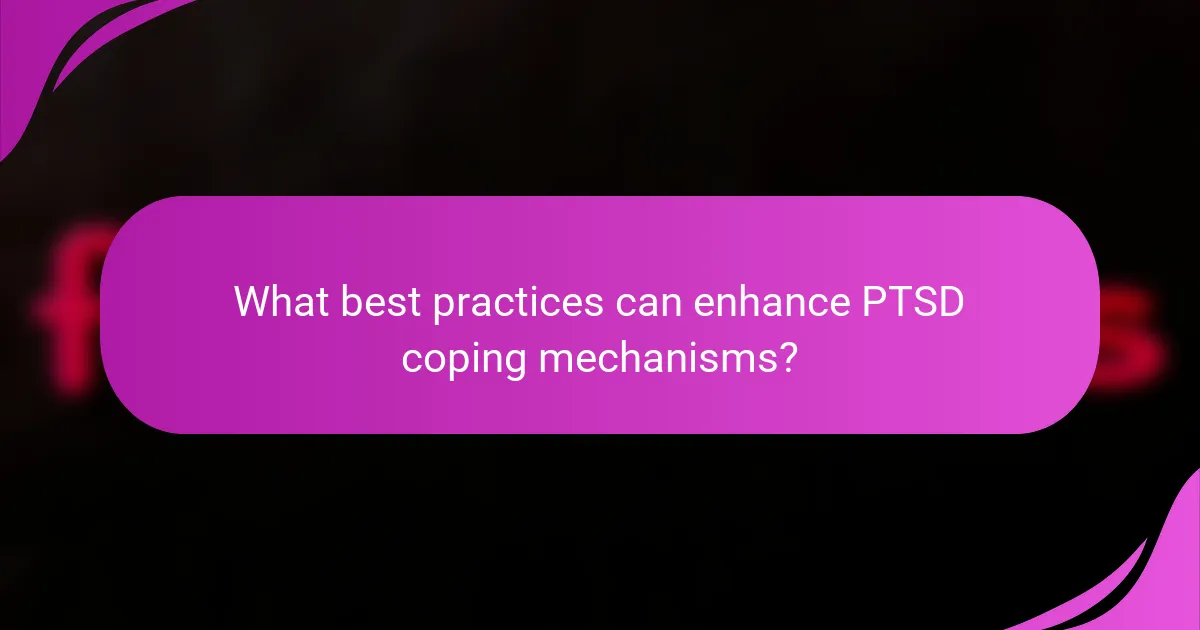
What best practices can enhance PTSD coping mechanisms?
Practicing mindfulness, engaging in physical activity, and seeking social support enhance PTSD coping mechanisms. These strategies promote emotional regulation and resilience. Mindfulness reduces anxiety, while exercise releases endorphins, improving mood. Social connections provide validation and understanding, fostering a sense of belonging.
How can individuals create a personalized coping plan?
Individuals can create a personalized coping plan by identifying triggers, setting goals, and incorporating healthy coping strategies. First, assess personal stressors related to PTSD. Next, establish specific, achievable goals for managing symptoms. Incorporate techniques such as mindfulness, journaling, or physical activity to enhance emotional resilience. Regularly review and adjust the plan to ensure effectiveness and adapt to changing circumstances.
What common mistakes should be avoided in PTSD management?
To effectively manage PTSD, avoid common mistakes such as neglecting professional help, ignoring self-care, and underestimating triggers. Many individuals mistakenly believe they can handle PTSD alone, which can hinder recovery. Failing to establish a support system can also exacerbate symptoms. Additionally, overlooking the importance of therapy or medication may limit coping strategies. Recognizing these pitfalls is crucial for effective management.
What expert insights can guide effective coping strategies?
Expert insights emphasize the importance of tailored coping strategies for PTSD. Effective approaches include establishing a strong support network, practicing mindfulness techniques, and engaging in physical activity. These methods help reduce symptoms and improve overall well-being. Research indicates that cognitive-behavioral therapy can significantly enhance coping mechanisms by addressing negative thought patterns. Additionally, integrating relaxation exercises can lower stress levels and promote emotional resilience.
